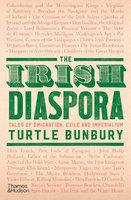New, Quality Gift Books - 50-90% off - over 2500 titles
Your basket is empty.
Categories History HOW THE TRICOLOR GOT ITS STRIPES
HOW THE TRICOLOR GOT ITS STRIPES
Book number: 95581
Product format: Hardback
In stock
Bibliophile price
£6.50
Published price
£18.99
Customers who bought this product also bought
|
HMS VICTORY POCKET MANUAL 1805: Admiral Nelson's Flagship
Book number: 95544
Product format: Hardback
Bibliophile price
£5.50
Published price
£9.99
|
REGICIDE: The Trials of Henry Marten
Book number: 94245
Product format: Hardback
Bibliophile price
£6.50
Published price
£20
|
UNSEEN LONDON
Book number: 93738
Product format: Hardback
Bibliophile price
£18.50
Published price
£35
|
|
VANITY FAIR FRANKLIN LIBRARY LEATHER BOUND
Book number: 94943
Product format: Unknown
Bibliophile price
£25.00
|
TRACING YOUR GEORGIAN ANCESTORS 1714-1837
Book number: 94962
Product format: Paperback
Bibliophile price
£8.50
Published price
£14.99
|
IRISH DIASPORA: Tales of Emigration, Exile and Imperialism
Book number: 95272
Product format: Hardback
Bibliophile price
£10.00
Published price
£19.99
|
Browse this category: History







